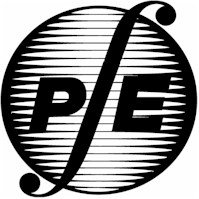DONT FORGET, ISPE HAS CHANGED
ITS EMAIL ADDRESS: ispe@idahospe.org.
PLEASE UPDATE YOUR RECORDS WITH THIS NEW ADDRESS. THANK YOU!
Idaho Society of Professional Engineers
Friday Update 07/28/06
UPCOMING EVENTS:
August 3, 2006 ISPE Northern Chapter Professionalism Committee Breakfast
Meeting 6:30 am Michael Ds
September 19, 2006
ISPE Southwest Chapter Noon Luncheon Meeting
September 28, 2006
ASCE Southern Idaho Section Noon
Meeting
October 27, 2006 - PE and PS
Examinations - Boise, Idaho
October 28, 2006 - FS (aka
LSIT) Examination - Boise, Idaho, Pocatello, Idaho, Moscow, Idaho
October 28, 2006 - FE (aka EIT)
Examination - Boise, Idaho. Pocatello, Idaho, Moscow, Idaho
February 6 10, 2007
Idaho Society of Professional Land
Surveyors Conference - Coeur d' Alene Casino - Worley, Idaho
SURVEY REVEALS THE OUTLOOK OF ENGINEERS
NSPE's Annual Engineering Outlook Index survey revealed some interesting
findings about the thinking of professional engineers on a variety of topics.
The online survey received 409 responses, 325 of which were submitted by PEs.
Here are some of the highlights:
Respondents were evenly divided over the issue of whether additional education
beyond the four-year bachelor's degree should be necessary for entry into the
engineering profession: 50.4% either agreed or strongly agreed that education
beyond a four-year degree is necessary, while 36.6% either disagreed or strongly
disagreed, and 13% weren't sure.
When given the statement "The current job market for engineers is good," 64.1%
agreed or strongly agreed and 16.8% disagreed or strongly disagreed. (The survey
was online from mid-April through June.)
Most respondents (55.7%) agreed or strongly agreed that the images and stature
of the engineering profession is positive while 27.4% disagreed or strongly
disagreed and 16.8% said they weren't sure.
Look for more survey results in the upcoming August/September issue of PE
magazine.

FALL 2006 NSPE/KAPLAN
FE AND PE EXAM
It is that time of year to start preparing now for the fall 2006 Fundamentals of
Engineering Exam and the Principles and Practice of Engineering Exam on October
27 and 28. NSPE members taking the exams this fall are entitled to a 25%
discount on all exam preparation materials from Kaplan. For more information,
contact Mary Maul, Director of Education, at 703-684-2833 or
mmaul@nspe.org.

MATHCOUNTS PROBLEM OF THE WEEK
Can you solve this MATHCOUNTS problem? The answer will appear in next week's
edition of the Friday Update!
Paying Big Bucks For Balloons
VH1 Classic did a fundraiser for Hurricane Katrina relief. Viewers could request
one music video to be played for every $25 donation. If the average video lasts
3 minutes, 44 seconds, how many videos could be played during an hour? (Express
your answer to the nearest whole number.) For those videos, how much money would
be donated?
--------------------------------------------------------------------------------
Rather than requesting one video for $25, a viewer could request an entire
hours worth of videos for a $35,000 donation. The event raised approximately
$200,000. Assuming videos were playing non-stop, how many fewer hours would the
event have lasted if each hour were purchased in its entirety for $35,000 rather
than viewers purchasing individual songs for $25 (that again lasted 3 minutes,
44 seconds each)? Express your answer to the nearest ten hours.
--------------------------------------------------------------------------------
One viewer who purchased an hour for $35,000 did not make the usual request of
an hour of different videos. Instead, the viewer requested continuous playing of
the song 99 Red Balloons. In this song there is mention of 99 red balloons in
the sky. If the 99 red balloons were released into the sky in group(s) of equal
sizes, how many possible group-sizes are there?
Answer to last weeks MATHCOUNTS problem:
Because the Celsius and Fahrenheit temperatures have a linear relationship, we
can let the desired temperature be x and work with the ordered pairs (0, 32)
,(45, 113) and (51,x). When the Celsius temperature goes us 45 degrees (from 0
to 45), we see that the Fahrenheit temperature goes up 81 degrees. So if we
raise the temperature 51 degrees (from 0 to 51), how many degrees Fahrenheit
would the temperature go up from 32 degrees to x degrees? Well represent this
increase in temperature with y, and this relationship is shown with 45/81 =
51/y. Multiplying both sides by y and 81, we get 45y = 51(81). Now dividing both
sides by 45 gets us to 91.8 degrees, so the new temperature would be 32 + 91.8 =
123.8 degrees Fahrenheit. (Remembering the freezing temperatures and that the
relationship between Celsius and Fahrenheit is linear is very helpful if you
cant remember the conversion equations (5/9)(F 32) = C and (9/5)C + 32 = F.)
--------------------------------------------------------------------------------
The temperature will have to rise more than 121 113 = 8 degrees Fahrenheit. If
it is rising at a rate of 0.72 degrees per decade, it will take 8 0.72 = 11.11
decades, which means 11 complete decades isnt quite enough. It will take 12
complete decades for the temperature to first be higher than 121 degrees
Fahrenheit.
--------------------------------------------------------------------------------
We might be tempted to say it went from 48% to 53% above the 1990 level, which
is an increase of 5%. But that is 5% of the 1990 level. If we are finding a
percent increase from one year to the next, we have to compare the increase from
2004 to 2005 to the amount in 2004 not the amount in 1990. If the CO2 level in
1990 was x, then the amount in 2004 was 1.48x and the amount in 2005 was 1.53x.
This means 1.48x increased by 0.05x, which is 0.05x χ 1.48x = 0.03378, or 3.4%
to the nearest tenth.
If you want to see last week's problem again, click
http://www.mathcounts.org/webarticles/anmviewer.asp?a=844&z=107
Idaho Society of Professional Engineers
PO Box 170239
Boise, ID 83717-0239
208-426-0636
Fax: 208-426-0639
E-Mail: ispe@idahospe.org
Web Site: www.Idahospe.org
 Idaho
Society of Professional Engineers
Idaho
Society of Professional Engineers